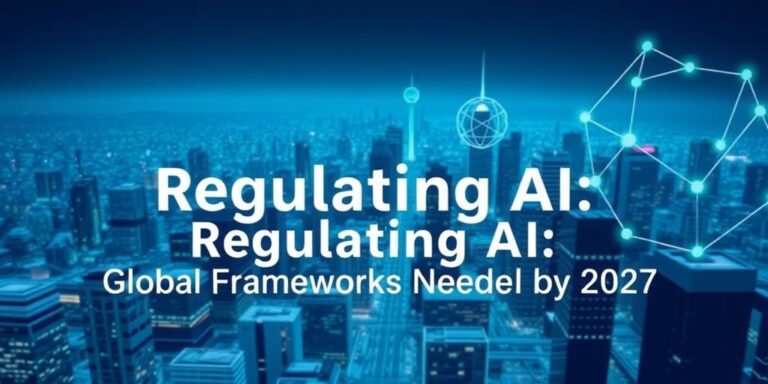The rapid advancement of artificial intelligence (AI) necessitates the establishment of comprehensive global regulatory frameworks by 2027. This urgency stems from AI’s increasing integration into various sectors, including healthcare, finance, transportation, and security, raising complex ethical, legal, and societal challenges.
The Current Landscape
Currently, AI regulation is fragmented, with different countries and regions adopting varying approaches. The European Union is at the forefront with its proposed AI Act, aiming to classify AI systems based on risk levels and impose corresponding requirements. The United States is considering a multi-faceted approach, involving sector-specific regulations and guidelines developed by agencies like the National Institute of Standards and Technology (NIST). Other nations, such as China and Canada, are also developing their own regulatory frameworks.
Challenges of Fragmented Regulation
The lack of a unified global approach presents several challenges:
- Inconsistent Standards: Varying standards across jurisdictions can create confusion and compliance burdens for companies operating internationally.
- Regulatory Arbitrage: Companies may seek to locate their AI development and deployment activities in regions with the least stringent regulations, potentially undermining ethical considerations and safety standards.
- Hindered Innovation: Overly restrictive regulations in some regions could stifle innovation and limit the potential benefits of AI.
- Enforcement Difficulties: Cross-border data flows and the global nature of AI systems make it challenging to enforce regulations effectively.
Key Elements of a Global Framework
A global AI regulatory framework should address the following key elements:
- Ethical Principles: Establishing shared ethical principles, such as fairness, transparency, accountability, and respect for human rights, to guide the development and deployment of AI systems.
- Risk-Based Approach: Classifying AI systems based on their potential risks and tailoring regulatory requirements accordingly. High-risk applications, such as autonomous weapons systems or AI-powered surveillance technologies, would be subject to stricter scrutiny.
- Data Governance: Defining clear rules for data collection, use, and sharing to protect privacy and prevent bias in AI systems.
- Accountability and Liability: Establishing clear lines of accountability for the actions of AI systems and addressing liability issues in case of harm.
- International Cooperation: Fostering collaboration among governments, industry, academia, and civil society to develop and implement effective regulations.
Steps Toward Global Alignment
Achieving a global AI regulatory framework by 2027 requires concerted efforts:
- Multilateral Discussions: International organizations, such as the United Nations, the OECD, and the G20, should facilitate discussions among countries to identify common ground and promote convergence in regulatory approaches.
- Harmonization of Standards: Standard-setting bodies, such as ISO and IEEE, should develop globally recognized standards for AI safety, security, and ethical considerations.
- Pilot Projects and Sandboxes: Governments should support pilot projects and regulatory sandboxes to test and refine AI regulations in real-world settings.
- Capacity Building: Providing technical assistance and training to developing countries to enable them to participate effectively in the global AI regulatory landscape.
Conclusion
The development of AI is progressing at an unprecedented pace. To ensure that AI benefits humanity while mitigating potential risks, a globally aligned regulatory framework is essential. By 2027, a comprehensive and coordinated approach is needed to address the ethical, legal, and societal challenges posed by AI and to foster innovation in a responsible and sustainable manner.




